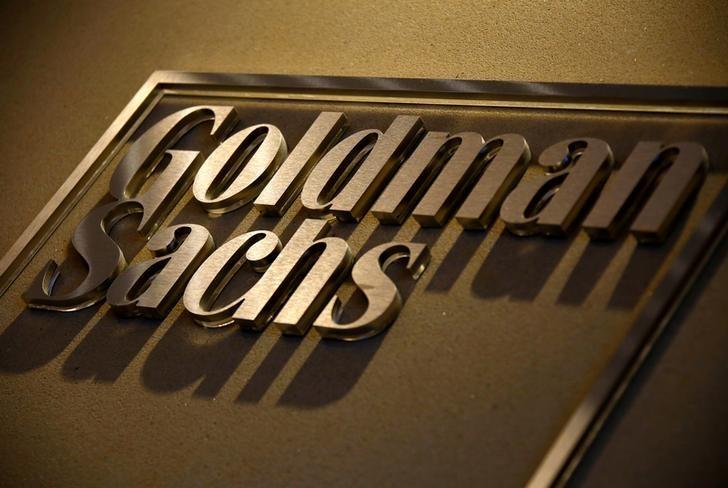As Goldman Sachs Group Inc approaches its first-ever investor day on Wednesday, all eyes are on its tiniest business division, the consumer bank, and how the Wall Street powerhouse will get it to grow.
While Goldman will present broad financial targets and details on many of its other multi-billion-dollar businesses, analysts and investors told Reuters they are eager to hear more about the consumer bank, which consists of Goldman's online bank Marcus and its credit card with Apple.
At the moment, that consumer bank generates just 2.4 percent of Goldman's annual revenue, compared to almost 40 percent of the revenue that comes from the bank's securities division. Analysts believe it will take at least a decade for the consumer bank to become as substantial as other major businesses.
But Marcus is a central pillar of Chief Executive Officer David Solomon's vision for Goldman Sachs, whose 151-year history has had very little to do with Main Street. The consumer unit generates an outsized share of the Wall Street bank's publicity.
"While Goldman has lots of good ideas, it needs to execute, especially in certain areas that are somewhat new to it," Barclays analyst Jason Goldberg said.
Marcus was unveiled in 2016

Goldman unveiled Marcus in 2016 as a way to supplement the falling income from trading, which has declined across Wall Street because of new regulations and shifting customer preferences.
The bank has invested heavily in the business, advertising lucrative savings rates, buying a personal-finance app and launching a credit card with Apple Inc last year to lure customers.
Those efforts have helped gather $60 billion in deposits and issue $7 billion in loans and credit card balances as of year-end.
Analysts characterize that as fast growth for a bank that only entered the scene a few years ago, but they note that it came at a hefty cost and still represents a fraction of the balance sheets of big universal lenders like JPMorgan Chase & Co or Bank of America Corp.
Goldman set up a particular challenge for itself by not opportunistically buying a big retail bank or brokerage firm during the financial crisis when they had the chance, DBRS, Inc analyst Mike McTamney said.
Even its closest rival, Morgan Stanley, went through a transformative deal that changed the composition of its customers and revenue streams.
Even after hundreds of millions of dollars invested in Marcus, several analysts noted, trading accounted for 40% of Goldman's annual revenue last year.
"Goldman Sachs failed to evolve as quickly as it should have," said Mike Mayo, an analyst at Wells Fargo & Co. "They were strategically complacent."
Goldman acting more like its peers
Although Goldman has been publicly traded since 1999, a bank since 2008 and part of the Dow Jones Industrial Average since 2013, it has only recently come around to the idea that it needs to act more like peers. The investor day itself came after years of analysts and investors demanding more disclosures and transparency.
As Reuters reported in November and management confirmed this month, Goldman plans to move away from a hard-to-measure $5 billion revenue target executives had outlined in 2017. Instead, they plan to offer metrics like a bank-wide efficiency target and granular details about individual businesses, the way rivals do.
But the central question remains how Goldman will transform itself from a Wall Street bank into something that looks more like universal rivals, especially without performing an acquisition, analysts said.
Management has toyed with the idea since the crisis, even publicly musing about it from time-to-time. Solomon's predecessor, Lloyd Blankfein, has said that not acquiring a big retail bank was his biggest regret as CEO, and former finance chief Marty Chavez said in 2018 that Goldman still had an interest in doing so.
However, it would be much more expensive and difficult for Goldman to do such a deal today.
Although the regulatory environment has eased during the Trump administration, there would be heavy political pressure against Goldman buying one of its peers, especially ahead of the 2020 elections. And, despite being the fifth-biggest US bank by assets, Goldman's market value of $84 billion is comparable to smaller regional rivals it might want to buy, which makes such a transaction financially difficult.
Goldman's share price of $238.14 as of Monday's close means investors value it at less than what it says its stated assets are worth. That "multiple" harms its ability to buy banks that are valued more richly.
Solomon, a longtime investment banker, might seem like the most likely person to do such a deal, but he might be stuck growing Goldman's consumer bank from the ground up, analysts said. Sources inside the bank said he thinks Goldman would need to be trading around $400 to think about doing a big deal.
"It would be really challenging to grow 50% through an acquisition," said David Konrad, an analyst at DA Davidson. "Goldman doesn't really have the multiple."








